
H&M Revenue Growth Stalls as Fashion Retailer Raises Prices
H&M’s revenue growth unexpectedly ground to a halt as the Swedish retailer raised prices even amid increasing competition
2023-09-15 15:21

Truth behind ‘meteorite crater’ brings amateur astronomer down to Earth
A stargazer who thought he’d made the discovery of a lifetime was brought down to Earth with a bump when a crater apparently left by a meteorite was revealed to be nothing more than a hole dug by beach-goers. Astrophysics enthusiast Dave Kennedy was over the moon when the hole, several feet wide and deep, appeared in north Dublin. He felt sure that a small, black, heavy rock found at the bottom of the hole was an asteroid from outer space, and contacted various astronomy experts in an effort to confirm his theory. He said a scorch mark on one side of the rock showed the angle at which it had fallen. “Only a month ago, I was watching a documentary from Nasa on exactly what we’re looking at so when I looked at it and saw how uniform it is, and the vast crater, I knew immediately I was looking at an impact site,” he said. Visitors to the Portmarnock beach gathered to inspect the crater. One said: “We’re down here quite a lot and never seen anything like this before, so it’s pretty spectacular.” However, Mr Kennedy’s optimism was short-lived. Within a day of his appearance on Virgin Media News, a “context note” on X (formerly Twitter) compiled from user information read: “It is in fact not a cosmic event - instead it was dug out the day before by 2 lads with a beach spade.” Footage on social media posted by friends of the young men showed them sitting in the hole, digging it out with children’s spades, and was captioned: “The hole we dug on Saturday”. Although the astronomy enthusiast was widely mocked, he said he would still have the rock analysed in the hope it wasn’t a “completely fruitless discovery”, Virgin Media News reported. Research on the chances of asteroids hitting Earth has focused on much larger rocks. Astronomers say Earth probably will not be struck by an object 1km wide (0.6 miles) for at least 1,000 years – but they have not ruled out smaller meteorites landing before then. Read More 4.6 billion-year-old meteorite sheds light on early solar system – study Best beach stays in the UK and Ireland for a peaceful break in 2023 Ukraine war: Kyiv ‘is pushing Russia back’, UK’s most senior military officer says War-blinded Ukrainian soldier cries with joy at new love at his wedding Ukraine ‘holds initiative’ in counteroffensive against Russia, says UK military chief
2023-09-15 14:50
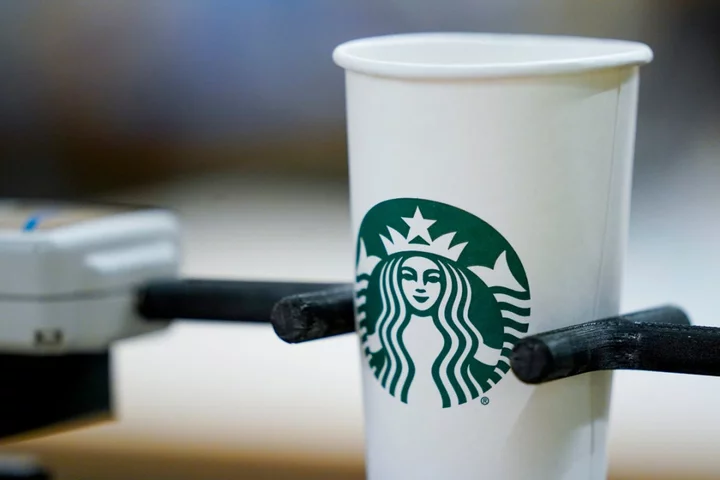
Citing sustainability, Starbucks wants to overhaul its iconic cup. Will customers go along?
Bethany Patton steps up to the counter and places her pink mug into a shoebox-sized dishwasher. It spins. It whirs. Water splashes inside. After 90 seconds, the door opens and steam emerges. A barista grabs the mug, dries it and prepares Patton’s order — a 16-ounce Starbucks double espresso on ice. For bringing her own cup, Patton gets $1 off her drink. “Saving the environment is important and all, but I probably come here more in knowing that I’m going to get a dollar off,” says Patton, 27, a cancer researcher at Arizona State University. Two friends who came on the afternoon coffee run nod as they hold the cups that they, too, brought along. Just as noteworthy as what they're carrying is what they are not: the disposable Starbucks cup, an icon in a world where the word is overused. For a generation and more, it has been a cornerstone of consumer society, first in the United States and then globally — the throwaway cup with the emerald logo depicting a longhaired siren with locks like ocean waves. Ubiquitous to the point of being an accessory, it has carried a message: I am drinking the world's most recognizable coffee brand. Now, in an era where concern for sustainability can be good business, the Starbucks disposable cup may be on its way to extinction thanks to an unlikely force: Starbucks itself. CONVENIENCE COLLIDES WITH VIRTUE By 2030, Starbucks wants to move away completely from disposable cups, which represent big portions of the company’s overall waste and greenhouse gas emissions. The stated reason is that it's the right thing to do for the environment, and Starbucks has a history of lofty sustainability goals around various aspects of their global operations. Some have been met, such as new stores being certified for energy efficiency; others have been revised or scrapped entirely. For example, in 2008 the company said that by 2015 it wanted 100% of its cups to be recyclable or reusable. Today, that's still a long way away. Today's drive to overhaul the cup comes with an obvious business imperative. Producing disposable products like cups creates greenhouse gas emissions, which warm the planet and lead to extreme weather events and other manifestations of climate change. That goes against customers' increasing expectations for companies to be part of the solution to climate change. Still, while customers want companies to be environmentally conscious, that doesn’t mean they’re willing to give up convenience. And there's this: Could eliminating the millions of paper and plastic cups used each year hurt Starbucks? After all, those cups, in the hands of customers, are advertising — a market penetration that makes Starbucks feel ubiquitous. At the store where Patton gets her coffee, Starbucks already doesn't serve any in disposable paper or plastic cups. Customers who don’t bring their own are given a reusable plastic one that can be dropped off in bins around campus. It’s one of two dozen pilots over the last two years, aimed at changing how the world’s largest coffee maker serves its java. The goal: to cut the company's waste, water use and carbon emissions in half by 2030. Pulling that off will be tricky and fraught with risks. It provides a window into how companies go from ambitious sustainability targets to actual results. “Our vision for the cup of the future — and our Holy Grail, if you will — is that the cup still has the iconic symbol on it,” says Michael Kobori, head of sustainability at Starbucks. “It’s just as a reusable cup.” Starbucks sees the change as an opportunity to cast the siren, and the company, in a different light. It also wants to push more suppliers in its production chain to provide recycled material and partners, such as universities and other locales that house stores, to be able to handle all that comes with reusable cups. Erin Simon, vice president for plastic waste and business at World Wildlife Fund, says commitment from major companies can help. But ultimately, she says, major change can happen only with corporate collaboration — and government regulation. “Not one institution, not one organization, not even one sector can change it on its own," Simon says. At Starbucks, the changes will create ripple effects. Jon Solorzano, a Los Angeles lawyer who advises companies on developing climate-friendly operations and disclosures, (an area referred to as “environmental, social and governance”), says the company likely has hundreds of suppliers that help manufacture cups. “It’s kind of like turning an aircraft carrier around,” Solorzano says. “Little tiny tweaks, which seem insignificant, can actually have big operational challenges for an organization." Starbucks is not the first company to push toward a reusable cup. From large companies in Europe, such as RECUP in Germany, which uses reusable cups and other food packaging, to local coffee houses in cities like San Francisco, the goal for years has been to shed disposable paper and plastic. But as the largest coffee company in the world, with more than 37,000 stores in 86 countries and revenues of $32 billion last year, Starbucks could force change across the industry. At the same time, failure to adapt and lead could hurt the coffee giant in customers' eyes. “I’ll always choose the more sustainable company,” says Irene Linayao-Putman, a public health worker from San Diego who recently bought Starbucks while visiting Seattle. The road to overhauling the container transcends just making a different choice or spending money. Improving sustainability requires navigating a web of technological developments, seeking out like-minded suppliers and testing how far customers can be pushed to change. For Starbucks, it means doing two major things in parallel that seemingly conflict: Move toward only reusable cups while developing disposable cups that use less material and are more recyclable. And managing the optics along the way. “They are just trying to get more buyers,” 10-year-old Aria June said with a laugh after buying Starbucks in Seattle. Then, prodded by her father, she added that sustainability and getting more business could co-exist. THE MECHANICS OF REUSE At the Arizona State store, if customers don’t bring their own cup, they are given a reusable plastic one with a Starbucks logo. If they bring it back, they get $1 off, just like customers who bring their own. And if they don't want to hold onto it? There are bins around campus, and the cups are washed by the university — part of a partnership with Starbucks — and returned to the store. Cups too damaged to be reused, along with disposable Starbucks cold drink cups and other plastic found in the trash, are sent to the university’s Circular Living Lab. They're shredded, melted and extruded into long, lumber-like pieces. Those pieces are cut, sanded and built into boxes, which become the return bins for the reusable cups. “This obviously has some energy and production costs, but using recycled content is always going to be less energy intensive (and) emit less CO2 than using virgin plastics,” says Tyler Eglen, the lab's project manager. For several years, Starbucks has been increasing the amount of recycled material in disposable paper cups. In some markets last year, Starbucks began using single-use paper cups made with 30% recycled material, an increase from 10%. The plan is to have all cups at 30% recycled material in in all U.S. stores starting in early 2025. That pushes the limits of what can be done with recycled paper material that holds hot liquids. Paper pulp from recycled cups has shorter fibers than virgin pulp, which means less rigidity, important particularly with hot coffee. How much recycled material can be used in manufacturing new cups depends on how equipped any particular area is to gather material and recycle it. Big cities have major recycling infrastructure, but many communities around the world have little to no recycling capacity. Another barrier: the lining inside the cup, crucial to keeping a hot liquid from quickly breaking down the paper. Made of polyethylene, a heat-resistant plastic, the liner is about 5% of the total cup but a significant piece of its overall carbon footprint. There is also the plastic lid. “Today, the reality is that for protection, as we put a hot beverage inside, we need a good seal on those cups," says Jane Tsilas, Starbucks’ senior manager for packaging. A similar testing and refining process is happening with disposable cold-drink cups. At the Tryer Center innovation lab in Starbucks' Seattle headquarters, drinks with ice in plastic cups are placed in holders attached to a platform. It then shakes as technicians look for leaks and flaws. For the last several years, Starbucks has been testing different kinds of plastics. In 2019, the company went to a strawless lid, eliminating a good amount of plastic. By the end of 2023, the goal is to reduce by 15% the amount of material in each cup. To do that, technicians examine different parts of the cup to see where less material may be used without weakening it. For example, could reducing the thickness where many people hold the cup, about halfway between the middle and lid, mean the cup collapses and the drink spills on the customer? "If it passes tests with baristas, then we would put it in the stores,” says Kyle Walker, a packaging engineer on Starbucks' research and development team. NOT AS EASY AS IT MIGHT SEEM Eventually, the endpoint is this outcome, which is more sustainable and good PR, too: No more disposables at Starbucks. That's because no matter the tests or technological innovations, there are limits to how much waste can be reduced with disposable paper and plastic cups. Long-term reductions in waste will come from reusable cups. The company has a long way to go. Since the reintroduction of reusable cups in some stores in July 2021 — reusable cups were not used during much of the COVID-19 pandemic — only 1.2% of worldwide sales in fiscal year 2022 came from reusables. Starbucks refused to provide data on how many disposable cups it uses in any given year. For all the talk of sustainability and increasing consciousness about climate change, it’s fair to assume that a significant number of Starbucks’ disposables end up in landfills. Even in Seattle, a progressive city with good recycling infrastructure, there are many cups in garbage cans outside Starbucks stores. Valencia Villanueva, a barista at the Arizona State store, has noted a growing consciousness among customers about the cup-washing machine and the “borrowed” cup program. That gives her confidence that the future is reusable cups. After all, it's not as if anyone is clamoring to be wasteful — even if what they're giving up is an item that became something of a global status symbol. “Nobody," she says, “has complained and said they wanted a single-use cup.” ___ Peter Prengaman is news director of The Associated Press' climate and environment team and can be followed here. Video journalist Manuel Valdes in Seattle contributed to this report. ___ AP climate and environmental coverage receives support from several private foundations. See more about AP’s climate initiative here. The AP is solely responsible for all content. Read More Ukraine war’s heaviest fight rages in east - follow live Charity boss speaks out over ‘traumatic’ encounter with royal aide Citing sustainability, Starbucks wants to overhaul its iconic cup. Will customers go along? From piñata to postage stamp, US celebrates centuries-old Hispanic tradition Starbucks cheers ‘good progress’ in plan for 100 new UK shops
2023-09-15 13:57

Ukraine ‘holds initiative’ in counteroffensive against Russia, says UK military chief
Britain’s military chief has defended Ukraine’s counteroffensive and said its troops “continue to hold the initiative” amid criticism that the pushback against the Russian invasion is moving slowly. The comments have also come as the war-hit nation’s deputy defence minister on Thursday said “good news” had emerged in the eastern front of the battlefield. “In the north, they are holding and fixing Russian forces there and in the south they are making progress between 10km and 20km, depending on how you judge it,” Sir Tony Radakin was quoted as saying by The Guardian at the DSEI arms fair in London. “The idea that war is neat and tidy, and you can plan and predict it to the nth degree is nonsense,” said Britain’s most senior military officer. He said progress of the counteroffensive could not be measured by a predictable timetable and warned the UK is vulnerable to a potential missile or drone attack as he pushed for a further discussion on improving homeland security. There is an “aggressive world out there in terms of state threats”, he said, pointing out it is now easy to “get close to a country and fly drones in”. British armed forces were “having a bigger conversation about homeland defences”, the chief of the defence staff said and asked whether within that “we need to have a conversation about integrated missile defence”. Admiral Radakin has been closely monitoring the war with communication lines to Ukraine’s most senior military commander Valerii Zaluzhnyi. The comments come a week after Nato secretary-general Jens Stoltenberg shot back at recent criticism of “slow” counteroffensive from Ukrainian troops as he pointed out the numbers of mines in the battlefield Ukraine is encountering are at a historic high. “The starting point is that the Russian army used to be the second strongest in the world. And now the Russian army is the second strongest in Ukraine. That’s quite impressive by Ukrainians,” he said. “No one ever said that this was going to be easy,” Mr Stoltenberg told lawmakers at the European parliament earlier this month. “Hardly any time in history we have seen more mines on the battlefield than we are seeing in Ukraine today. So it was obvious that this was going to be extremely difficult. “The Ukrainians are gradually gaining ground. They have been able to breach the defensive lines of the Russian forces, and they are moving forward,” he said. Ukrainian officials said the war being fought in the country is unlike any other, as its air space has not been shut down and it does not have top-tier warplanes like F-16s. Last month, several US and other Western officials suggested the grinding war’s counteroffensive stage was falling short of expectations – but did not choose to be quoted on their claims. Some officials pointed holes in Ukraine’s strategy and blamed it for concentrating its forces in the wrong places. The counteroffensive has been backed by billions of dollars’ worth of Western military equipment. Read More Just 14 UK tanks for Ukraine? We must do better than that Sunak says Russian leader ‘doesn’t want to be held accountable’ at G20 US sends Ukraine controversial depleted uranium weapons that can pierce tank armour Zelensky needed to sack his defence minister – but it goes beyond just corruption scandals From Challenger to Leopard: How Ukraine’s tanks compare to Russia’s
2023-09-15 13:51
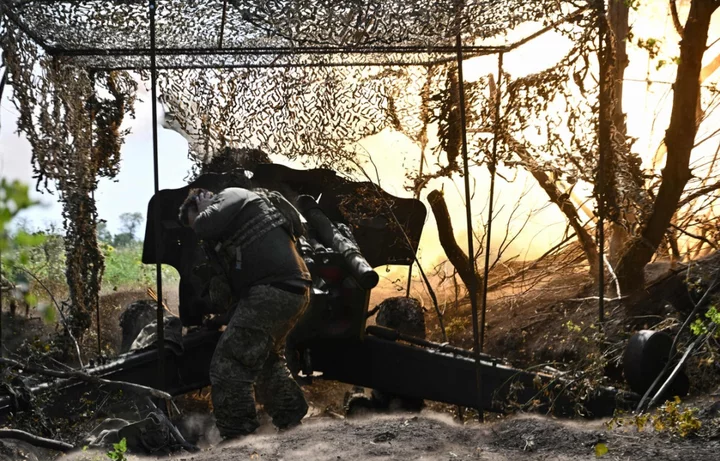
Ukraine closes in on village near Bakhmut amid Russian losses in east and south
Ukraine’s military has “good news” in the eastern front of the battlefield where heavy fighting is underway to regain ground, deputy defence minister Hanna Maliar has said, saying Kyiv’s forces were making gains near Bakhmut. “We are moving forward in the Bakhmut direction. The main battles continue in the districts of Andriivka, Kurdyumivka, Klishchiivka. And we have good news there – Andriivka. The situation is very complex and changeable, we keep our fingers crossed,” the deputy defence minister said in her official Telegram channel on Thursday evening. Initially, the minister claimed Ukrainian forces had retaken Andriivka village, which falls south of Bakhmut, but the country’s Third Assault Brigade fighting in the region said the report was “premature”. “Currently, serious and heavy fighting continues in the districts of Klishchiivka and Andriivka,” the brigade from Ukraine’s ground forces handling military operations on the eastern front said. Ms Maliar also said Vladimir Putin’s troops had sustained “significant losses” in attacks on key towns as Ukrainian forces are bolstering their efforts to capture clusters of villages in a drive towards the Sea of Azov. The Russian casualties had “significantly reduced their ability to defend themselves”, she said. Senior military officials said heavy casualties have been inflicted on Russian forces on the southern front, with over 600 deaths of Russian soldiers. “The enemy, as a result of attempts to recapture at least some of the lost positions in the Tavria (south) direction in the last two days has lost 15 tanks and 12 armoured vehicles,” Oleksander Shtupun, spokesperson for troops on the southern front, said on national television. Russian personnel losses stand at 665 over two days, he said. As part of a critical component of Ukraine’s four-month-old counteroffensive, the country’s forces are pushing southward with the aim to split a land bridge created by Russian forces between the Crimean peninsula and the areas Ukraine holds in the east. Russia’s defence ministry claimed its forces repelled eight attacks in the east in the hotly contested areas south of Bakhmut. Ukraine’s military confirmed attacks on two Russian patrol ships early on Thursday and said it destroyed a sophisticated air defence system in the west of occupied Crimea. President Volodymyr Zelensky marked a direct and rare celebration of the attacks on the Russian navy in his nightly address. “The entire staff of the Security Service of Ukraine and our Navy should be specially commended for this. I thank you for today’s triumph – the destruction of the occupiers’ air defence system on the land of our Crimea. It is a very significant achievement, well done! Glory to all who fight for Ukraine! And thank you to everyone who helps!” he said in his nightly address. The war-hit nation has been pushing back in the southern region and making increasing missile hits on the Crimean peninsula this week to challenge Mr Putin’s control in the Black Sea region. On Wednesday, Kyiv said it seriously damaged a Russian submarine and landing ship undergoing repairs in a missile strike on a shipyard in the Crimean port of Sevastopol, home to the Russian Black Sea Fleet. Read More Zelenskyy is expected to visit Capitol Hill as Congress is debating $21 billion in aid for Ukraine Ukraine-Russia war – live: Kyiv is pushing Putin forces back, UK’s most senior military officer says With Russia isolated on the world stage, Putin turns to old friend North Korea for help Kim Jong-un tests out Putin’s limousine during historic meeting Why support for Ukraine is in danger of splitting the EU
2023-09-15 12:50
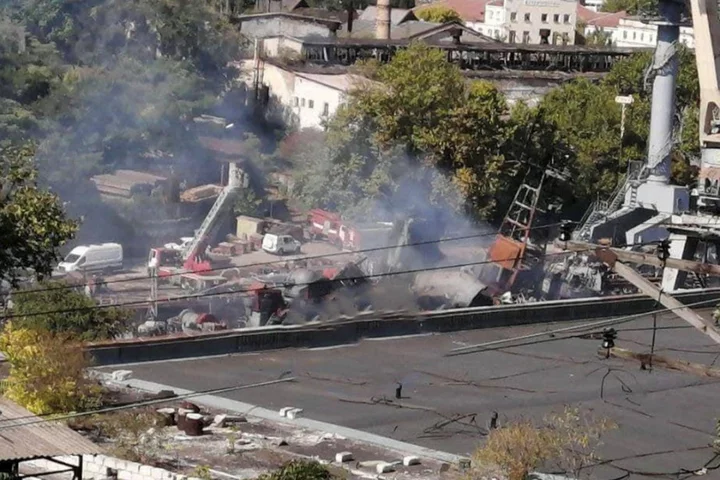
Ukraine-Russia war – live: Kyiv is pushing Putin forces back, UK’s most senior military officer says
Ukraine has the initiative in the war against Vladimir Putin and is pushing Russia back, according to Britain’s most senior military officer. Speaking at an arms fair in London. Sir Tony Radakin hit back at the idea Kyiv’s counteroffensive was struggling. “In the north they are holding and fixing Russian forces there and in the south they are making progress between 10 and 20km,” the Guardian reported him saying. His comments came as Ukraine president Volodymyr Zelensky hailed in his nightly address what he described as Ukraine‘s destruction of a Russian air defence system in the annexed Crimea peninsula “I thank you for today’s triumph,” he said, a reference to Russia’s “Triumf” air defence system. “The invaders’ air defence system was destroyed. Very significant, well done.” Ukraine has said it also attacked two Russian patrol ships on Thursday, ramping up its strikes to challenge Moscow’s dominance in the Black Sea region. The Ukrainian military, in a post on Telegram messenger, said it hit two Russian patrol boats in the southwest of the Black Sea, causing “certain damage” in the attack. Read More Kim Jong Un stops to see a fighter jet factory as Russia and North Korea are warned off arms deals She danced with Putin at her wedding. Now the former Austrian foreign minister has moved to Russia What is a Storm Shadow cruise missile?
2023-09-15 12:28

Briton bemused after failing to find ‘vino’ at Rugby World Cup stadium in France
A Brit was left bemused after being told there was no “vino” for sale at a Rugby World Cup stadium in France. Linda Russ, 64, says women weren’t catered for at the Stade Vélodrome in Marseille - as only beer was available. The stadium is located in the historic French province of Provence, which is famous for its wines. But Linda claims the irony was missed by staff - who she says stared back at her with a blank expression and said “non” when she asked for a glass. She was in the south of France with a group of friends to watch England and Scotland’s first games over the weekend. Linda, a retired school operations manager from Bristol, said: “Being in Provence, you would have thought they’d have wine. “The restaurants nearby had it, but there was none in the stadium. It was strange. “There were no alcoholic drinks at the Vélodrome for women. The only alcoholic drink available was beer and it ran out on both days before the match started. “We asked for wine and they said no. “We always go to the Bristol Bears rugby back home. It’s usually always cider or wine for the girls. “I think they just weren’t equipped to deal with rugby fans. “The people serving were so young, we asked for “vino” and they couldn’t understand us at all.” Wine is thought to have been made in Provence for at least 2,600 years, ever since the ancient Greeks founded the city of Marseille in 600 BC. And France and wine are synonymous the world over. Linda, who often goes to rugby games with family and friends, says she enjoys a drink while watching. She said: “We were thinking they may not have cider, which is what we normally have as we’re from Bristol. “We even tried ordering vino blanc and vino rouge, but they didn’t understand us at all!” Linda says the beer that was available quickly ran out too - which she views as a man’s drink. She said: “It was very strange that there seemed to only be alcohol for the men and not for the women. “We also noticed the toilets didn’t stock up on paper towels from the previous night in the women’s toilets. “It was really poor preparation - they were completely overwhelmed.” Asked how the stadium should better prepare for games, Linda said: “Get some wine in, get more beer in, and be more prepared.” “They’ve got to realise us rugby fans drink a lot.” The Stade Vélodrome and World Rugby were approached for comment. Read More Warning to Brits who dined at popular French restaurant after woman dies during botulism outbreak Chorus of disapproval: National anthems sung by schoolkids at Rugby World Cup out of tune with teams France sends the army to ensure water to drought-stricken Indian Ocean island of Mayotte Russia-Ukraine war: Kyiv ‘retakes village near Bakhmut’ after Crimea strikes - live Russian pilot tries to shoot down RAF spy plane: ‘You have the target’ Analysis: What we learnt from Vladimir Putin’s summit with Kim Jong-un in Russia
2023-09-14 22:54
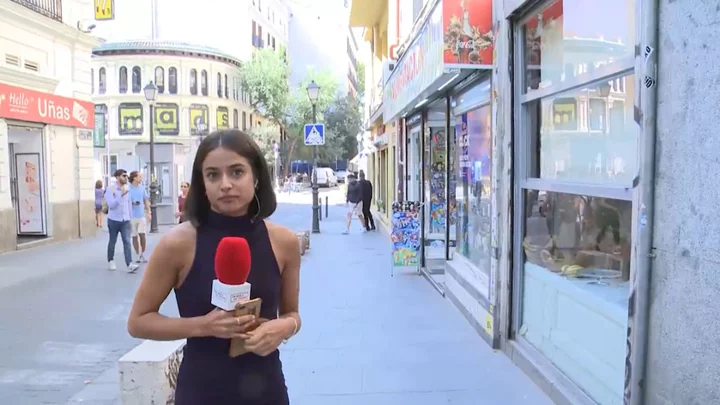
Outcry after Spanish TV reporter ‘groped’ live on air
A Spanish TV journalist was allegedly groped live on air by a member of the public in an incident which has sparked public outrage and condemnation from the Spanish government. Isa Balado was reporting on a robbery in Madrid when a man approached her from behind and appeared to touch her bottom in an incident that was being broadcast live. The man, who was later arrested by the police, can be seen denying touching the reporter inappropriately when confronted immediately afterwards. The video by broadcaster Cuatro, where Balado works, showed a man wearing white shorts and sunglasses approaching her and appearing to touch her before asking a question. He continued to stand to the side as Balado attempted to resume her report, before she was then interrupted by programme host Nacho Abad, who asked her what happened. “Isa, forgive me for interrupting you... but did he just touch your bottom?” he inquired. The journalist replied “yes” and Abad asked the cameraperson to put the “idiot on the camera” who is then shown laughing. “As much as you want to ask what channel we are from, do you really have to touch my bottom? I’m doing a live show and I’m working,” Balado told him. He denied touching her and Balado said: “I would like you to let me work.” The man insisted that he did not touch her before touching her head and walking away. After Balado apologised for the disruption to her live report, Abad said: “No, you have nothing to feel sorry for. “It makes me so mad,” he added. Spain’s national police later tweeted that a man had been arrested “for sexually assaulting a reporter while she was doing a live television show” and included a brief video clip of the arrest. The incident has sparked renewed anger in Spain as it comes amid an ongoing sexism row over former Spanish FA president Luis Rubiales kissing World Cup winner Jenni Hermoso. Mediaset Espana, which owns the broadcaster, said in a statement: “We fully support Isa Balado, reporter for En Boca de Todos, after the absolutely intolerable situation she has suffered today.” The country’s acting equality minister Irene Mantero said on X: “What until now was ‘normal’ is no longer so. Non-consensual touching is sexual violence and we say enough to impunity.” Calling for strict punishment, Yolanda Diaz, the acting labour minister and second deputy prime minister, blamed “machismo” for the assault. “Machismo is what leads to journalists having to suffer sexual assaults like this and leaves aggressors unrepentant in front of the camera,” she said. Rita Maestre, a spokesperson for Más Madrid in the Madrid City Council, called the incident “intolerable” and extended her support to the journalist. Read More ‘We should celebrate Spain’s winners, not focus on Rubiales’, says Sarina Wiegman ‘Get back in the kitchen’: Lioness Fara Williams on the aggressive sexist and homophobic abuse she gets online Luis Rubiales refuses to apologise to Jenni Hermoso over ‘consensual’ kiss Alastair Stewart reveals dementia diagnosis Ukraine war: Kyiv ‘retakes village near Bakhmut’ after striking Crimea - live iPhone 12 is not emitting dangerous radiation, Apple says, amid fears of Europe ban
2023-09-14 21:55

Kim Jong-un’s chair was ‘greatest concern’ at Putin summit
Kim Jong Un’s security team scrupulously inspected his chair and wiped it down with disinfectant before he could sit at Putin’s summit. Video footage published by te Kommersant newspaper on Thursday showed a North Korean security official in white gloves attentively wiping down Kim’s black chair and spraying an unidentified substance. The North Korean sprayed and wiped down the seat, the hands, the legs and even the area around the chair as a Kremlin bodyguard looked on in a slightly bemused way. Another North Korean guard then gave some sort of order to the guard doing the disinfecting. The nature of the order was unclear. “The chair turned out to be the subject of the greatest concern of the North Korean side,” wrote Kommersant’s Kremlin correspondent, Andrei Kolesnikov. According to reports, Kim’s security team of 100 people were unhappy with the first chair provided and demanded another one, the Kommersant said.“ Then a North Korean employee wiped the chair intended for Kim Jong Un for several minutes without stopping, wearing white gloves: judging by the smell he disinfected it,” said Kommersant, one of Russia’s leading newspapers. Others have speculated the security team also carried out a vigrous check to ensure the chair could handle the North Korean’s weigh and that one guard used a metal detector to check the seat for booby traps and angerous devices. Putin and Kim discussed military matters, the war in Ukraine and possible Russian help for North Korea’s satellite programme. Read More Ukraine-Russia war – live: UK Storm Shadow missiles used in attack on Putin’s Crimea fleet Russian pilot ‘believed he had permission to shoot down RAF spy plane’ Boris Johnson takes swipe at Rishi Sunak over ‘slow’ response to Ukraine weapons pleas
2023-09-14 19:29
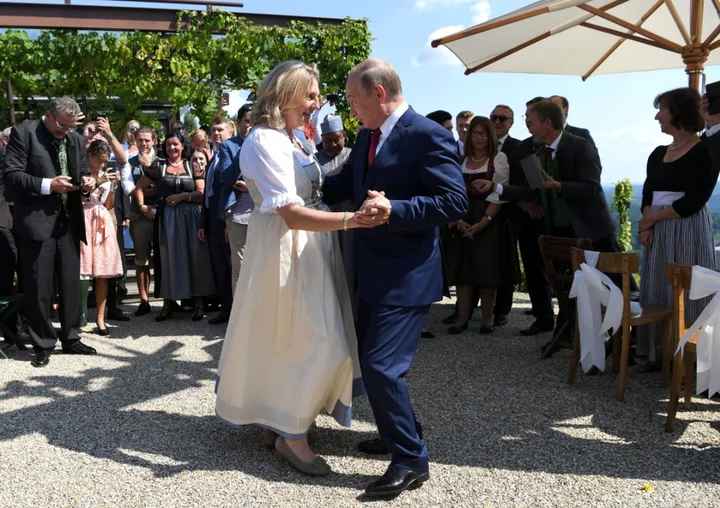
Austrian ex-foreign minister has ponies flown in on military plane as she moves to Russia
A former Austrian minister who announced recently that she was moving to Russia to lead a think tank, reportedly flew in her ponies to Moscow on a military plane. Karin Kneissl will move to St Petersburg to work at the Geopolitical Observatory for Russia’s Key Issues [GORKI], she told the Russian TASS news agency recently. Last week Ms Kneissl brought two of her ponies to St Petersburg on a military aircraft from the Russian air base at Hmeimim in Syria following a diversion from its intended mission of transporting troops. The Insider reported that Fighterbomber Z-channel confirmed that an Il-76 military transport aircraft was used to carry the animals. Ms Kneissl, 58, received a lot of notoriety for inviting Russian presidentVladimir Putin to her wedding in 2018. She co-founded the GORKI centre which she set up with St Petersburg University in June to “help define the policies for the Russian Federation” with a focus on the Near and Middle East. She said: “Since there is a lot of work and it requires a lot of attention, I can’t do it in passing, I decided to move to St Petersburg for this work.” It was reported that the Russian aircraft used to bring her two ponies belonged to the 224th flight detachment of the Ministry of Defence of the Russian Federation which in May came under US and Ukrainian sanctions for transporting equipment and mercenaries of the Wagner Group. Ms Kneissl – who is a former foreign minister – relocated to France in September 2020 and took on the role of a guest columnist for Russia Today, an outlet often perceived as a propagandistic mouthpiece of the Kremlin. Her invitation to Mr Putin drew widespread criticism. It occurred just months after several EU countries, excluding Austria, had expelled numerous Russian diplomats in response to the nerve agent attack on former Russian spy Sergei Skripal in Salisbury. On Wednesday, the former Austrian minister expressed shock over her move to Russia turning “political”. In a Telegram post, she said that she had moved her “books, clothes and ponies from Marseille to Beirut via DHL” in June 2022. Ms Kneissl had been living in Lebanon after leaving Austria in 2020 amidst a political scandal. However, Lebanon served as a temporary arrangement, she explained, and she would travel to Russia every six weeks for work. “Due to sanctions there are neither flights nor DHL [for her move to Russia],” she wrote. “I therefore had the option of accompanying a Russian transport flight from Syria to Russia, for which I am very grateful.” Ms Kneissl held the position of Austrian foreign affairs minister from 2017 to 2019. Meanwhile, the website of the Department of Veterinary Medicine of the Leningrad Region stated on 9 September that veterinarians carried out “all the necessary measures when importing animals into the territory of the Russian Federation”. “Specialists conducted a clinical examination of the ponies, took blood samples, and also quarantined them. Domestic horses are healthy”. Read More A flotilla of migrant boats from Tunisia overwhelms an Italian island and tests Meloni's policy Complex Napoleon: how Bonaparte’s unrivalled ambition built an empire and left a tangled legacy Weapons, spy satellites and nuclear ambitions: what we learned from Putin’s summit with Kim Jong-un in Russia The Body in the Woods | An Independent TV Original Documentary The harrowing discovery at centre of The Independent’s new documentary
2023-09-14 17:50

Russian pilot tried to shoot down RAF plane over Black Sea
A Russian pilot fired two missiles towards an RAF surveillance plane after mistakenly believing he had permission to fire. Following the incident last September, Russia claimed it had been caused by a “technical malfunction” with the UK’s Ministry of Defence publicly accepting their explanation. However, intercepted communications reveal that one of the Russian pilots believed he had been given permission to target the aircraft following an ambiguous command from a Russian ground station. The two Russian SU-27 fighter jets had encountered the RAF plane, which was carrying a crew of up to 30 people, as it was flying a surveillance mission over the Black Sea in international airspace on 29 September. Three Western defence sources with knowledge of the incident have told the BBC that the two Russian pilots received words to the effect of “you have the target”. This prompted one of the pilots to release an air-to-air missile, which successfully launched but failed to strike its target. A row then broke out between the two Russian pilots, as the second did not believe they had been given permission to fire. However, a second missile was released but simply fell from the wing - suggesting the launch was aborted or the weapon malfunctioned. As the Rivet Joint is loaded with sensors to intercept communications, the RAF crew would have been able to listen in to the incident which could have resulted in their own deaths. After the Russian Ministry of Defence called it a “technical malfunction”, the UK government confirmed the incident had taken place. In a statement to MPs on 20 October, the former Defence Secretary Ben Wallace described it as a “potentially dangerous engagement”. However, he added: "We do not consider this incident to constitute a deliberate escalation on the part of the Russians, and our analysis concurs that it was due to a malfunction." An intelligence leak, published online by US airman Jack Teixera, revealed that the US miliary spoke of the incident as a “near shoot-down”. “The incident was far more serious than originally portrayed and could have amounted to an act of war,” the New York Times reported. The MoD has now told the BBC that “this incident is a stark reminder of the potential consequences of Putin’s barbaric invasion of Ukraine.” Read More South Korea expresses 'concern and regret' over military cooperation talks between Kim and Putin What is a Storm Shadow cruise missile? Weapons, spy satellites and nuclear ambitions: what we learned from Putin’s summit with Kim Jong-un in Russia The Body in the Woods | An Independent TV Original Documentary The harrowing discovery at centre of The Independent’s new documentary
2023-09-14 16:59

Sweden Inflation Eases More Than Expected as Rates Near Peak
Sweden’s core inflation rate declined more than expected in August, providing some relief to the country’s central bank
2023-09-14 15:52
